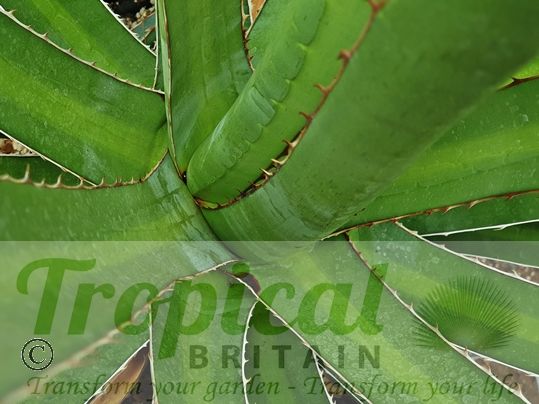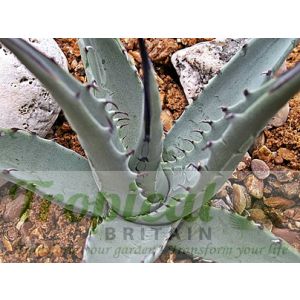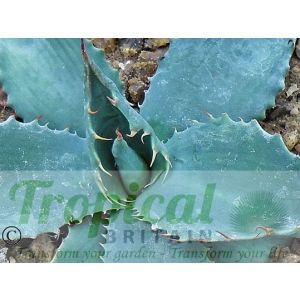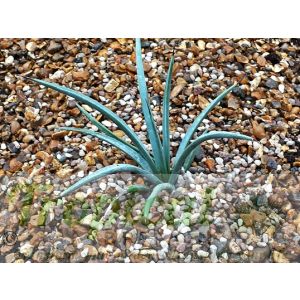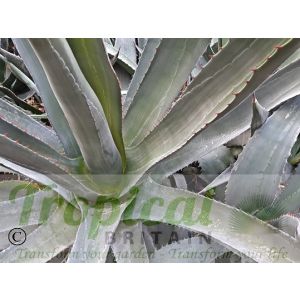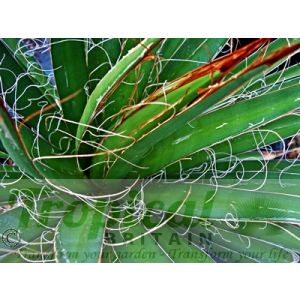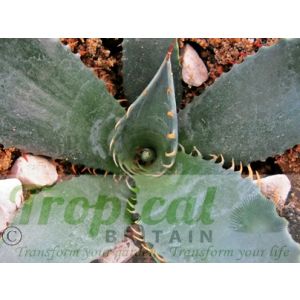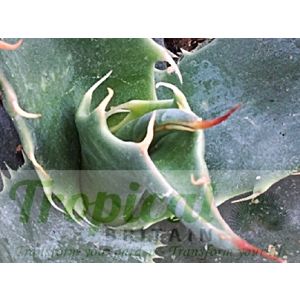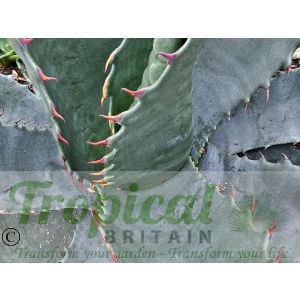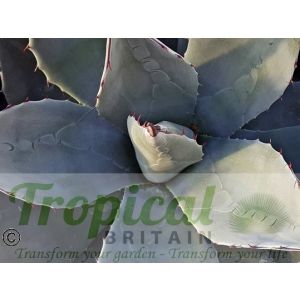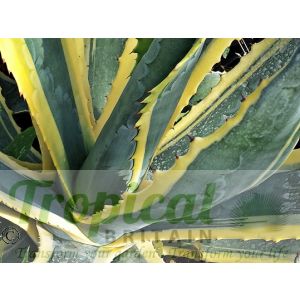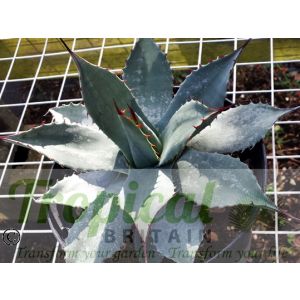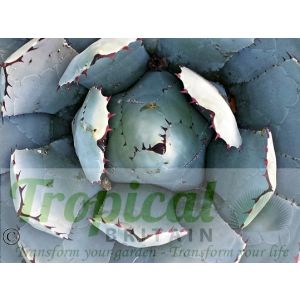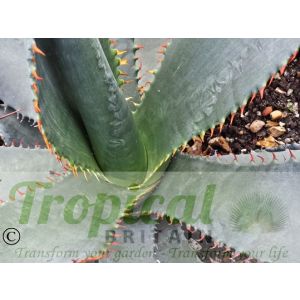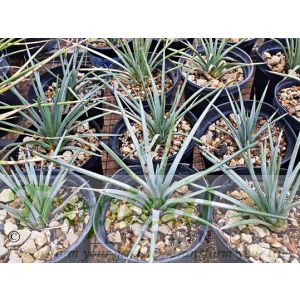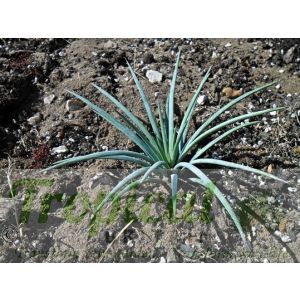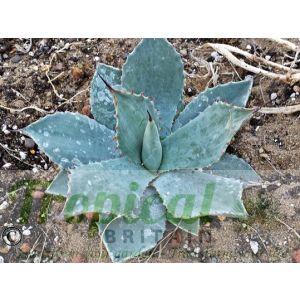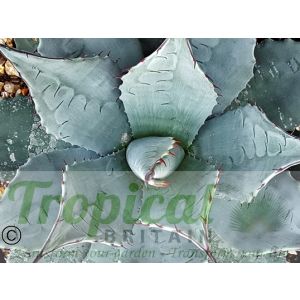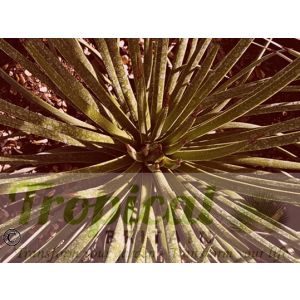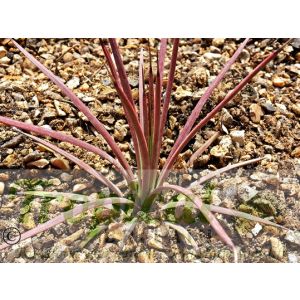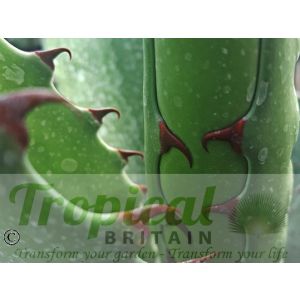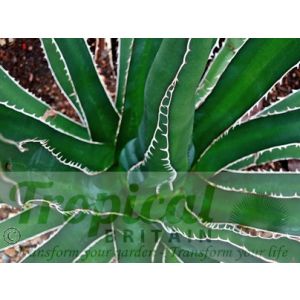- Buy 2 for £29.99 each and save 6%
- Beautiful Agave
- Long slender rigid leaf-blades
- Medium-sized with an open-structured upright rosette
- Shallow-rooting
Agave lechuguilla, Shindagger, is a tough clump-forming Agave from the Chihuahuan Desert where it grows on free-draining calcareous soils and is exposed to extremes of heat and cold. It has a large range from New Mexico in the Guadalupe and Sacramento Mountains and Carlsbad Caverns National Park down into Texas and the Trans-Pecos and the Big Bend National Park and across the Rio Grande where it can be found in Chihuahua, Coahuila, Durango, Hidalgo, Nuevo León, San Luis Potosi, Tamaulipas and Zacatecas. It commonly grows in the dry foothills, rocky slopes, and limestone highlands at elevations between 1000m and 1500m and in the desert grasslands and scrub vegetation forming dense thickets on very poor soils where little else will grow. In the Guadalupe Mountains it can reach elevations of 1800m and at some places in the Chihuahaun Desert it grows as high as 2500m.
In the wild it is a rugged and somewhat brutal customer but in cultivation and grown in ideal conditions it has an elegant and spacious charm, its thin long leaf blades held in an open upright manner that seems to resemble a large 3-dimensional botanic starfish. It has a pale yellowish-green stripe that runs down the middle of each leaf and the downwardly-pointing marginal thorns are a highly-contrasting white in colour.
Like most Agaves it is monocarpic and the inflorescence when it emerges is a very tall, slender, unbranched column adorned with hundreds of small greenish-yellow flowers with creamy anthers turning wine-red at the ends. They are quite beautiful. After flowering the parent plant dies and the surrounding offsets continue.
Agave lechuguilla has been used for thousands of years for food, drink and ixtle fibre and it continues to be used today as an important resource in modern-day Mexico.
One of the great iconic plants of the American Southwest. Unfortunately it is rarely encountered in British gardens and it should be grown more widely. The Chihuahuan Desert is a cold frosty desert in the winter and if given a very free-draining alkaline substrate and kept as dry as possible, Agave lechuguilla does well in the UK.
These are absolutely huge plants. Although they are in 3 Litre pots they really need to be potted on into 25 Litre pots to do them justice. They have been grown hard and kept in 3 Litre pots to facilitate ease and cost of carriage.
Additional Information
| Order | Asparagales |
|---|---|
| Family | Asparagaceae |
| Sub-Family | Agavoideae |
| Synonyms | Agave caerulescens, Agave poselgeri, Agave multilineata, Agave lophantha var. angustifolia, Agave lophantha var. brevifolia, Agave lophantha var. caerulescens, Agave lophantha var. gracilior, Agave lophantha var. latifolia, Agave lophantha var. pallida, Agave lophantha var. poselgeri, Agave lophantha var. subcanescens, Agave lophantha var. tamaulipasana, Agave univittata var. angustifolia, Agave univittata var. brevifolia, Agave univittata var. caerulescens, Agave univittata var. gracilior, Agave univittata var. subcanescens, Agave univittata var. tamaulipasana |
| Geographical Origin | Chihuahuan Desert; USA and Northern Mexico |
| Cultivation | Full sun. Very free-draining alkaline substrate; a raised desert bed or slope is ideal. The substrate should be mainly gravel, rock, sand and limestone with very little soil or organic matter |
| Eventual Height | 60 cm; the inflorescence can rise to 4-5 m |
| Eventual Spread | It offsets relatively freely to form a spreading clump to 2 m |
| Hardiness | Frost hardy to about -15C if kept dry throughout the winter. Covering with fleece to keep it both warm and dry is a good idea in the worst of the winter weather |
- Buy 2 for £29.99 each and save 6%

Free DELIVERY
ON ALL ORDERS OVER £99THIS OFFER IS VALID ON ALL OUR STORE ITEMS.
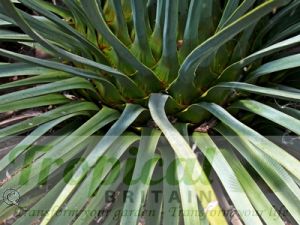
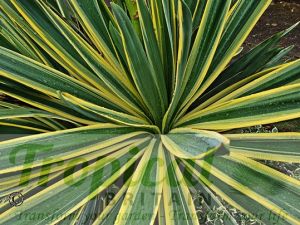
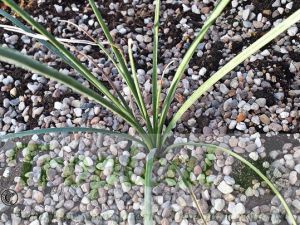
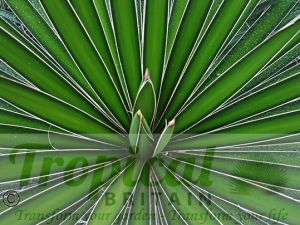
THE PLANTS
- Smaller-Growing Succulents
- Aeonium
- Agave
- Agave americana
- Agave amica
- Agave chrysantha
- Agave cupreata
- Agave deserti
- Agave filifera
- Agave gentryi
- Agave gomezpompae
- Agave havardiana
- Agave horrida ssp horrida
- Agave lechuguilla
- Agave mitis var mitis
- Agave montana
- Agave palmeri
- Agave parryi
- Agave polianthiflora
- Agave striata
- Agave stricta Rubra
- Agave toumeyana
- Agave univittata
- Agave utahensis
- Agave victoriae-reginae - Huasteca Canyon
- Aloe
- Beschorneria
- Bryophyllum
- Dasylirion
- Furcraea
- Hesperaloe
- Hesperoyucca
- Nolina
- Yucca
- Astrophytum
- Austrocylindropuntia
- Brasiliopuntia brasiliensis
- Cereus
- Chamaecereus silvestrii
- Cleistocactus
- Cumulopuntia
- Cylindropuntia
- Echinocereus
- Echinopsis
- Epiphyllum
- Ferocactus
- Gymnocalycium
- Hatiora
- Kroenleinia grusonii
- Lophocereus
- Maihuenia
- Mammillaria
- Matucana
- Myrtillocactus geometrizans
- Opuntia
- Opuntia arenaria SB964
- Opuntia atrispina
- Opuntia basilaris
- Opuntia chisosensis SB992 Brewster Co, TX
- Opuntia cymochila - Brewster Co, TX
- Opuntia engelmannii var. sandia
- Opuntia erinacea
- Opuntia fragilis
- Opuntia humifusa
- Opuntia lindheimeri - Beeville, TX
- Opuntia phaeacantha
- Opuntia pottsii var. nova DJF1441 SW Albuquerque, NM
- Opuntia robusta
- Opuntia sandiana
- Opuntia sanguinicola
- Opuntia stricta
- Opuntia strigil
- Opuntia trichophora
- Oroya peruviana
- Parodia
- Polaskia
- Rhipsalis
- Schlumbergera
- Stenocactus
- Stetsonia
- Tephrocactus
- Alocasia
- Amorphophallus
- Arisaema
- Arum
- Calla
- Caladium
- Colocasia
- Dracunculus
- Monstera
- Helicodiceros muscivorus
- Philodendron
- Pinellia
- Remusatia
- Sauromatum
- Spathantheum
- Typhonium
- Xanthosoma
- Zantedeschia

